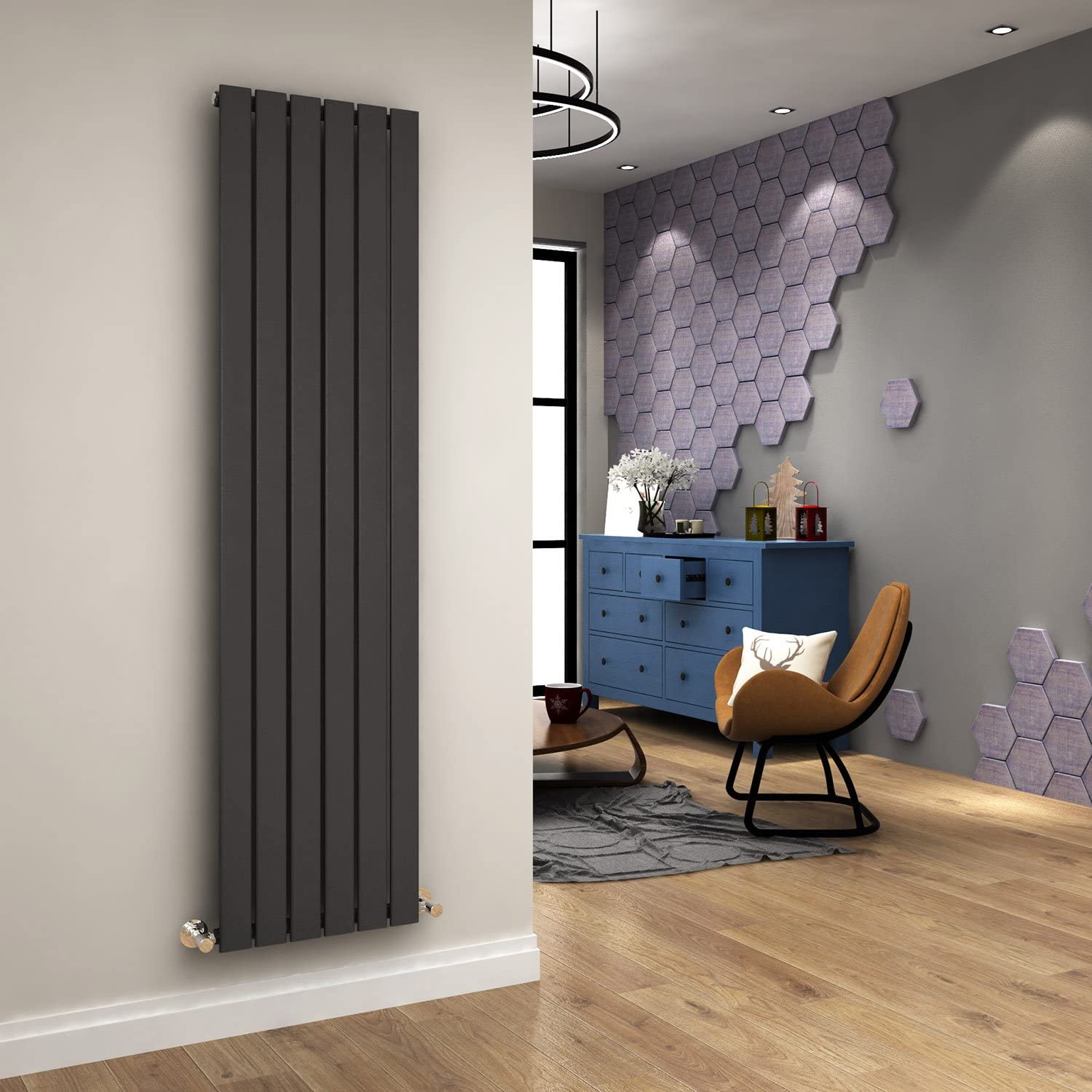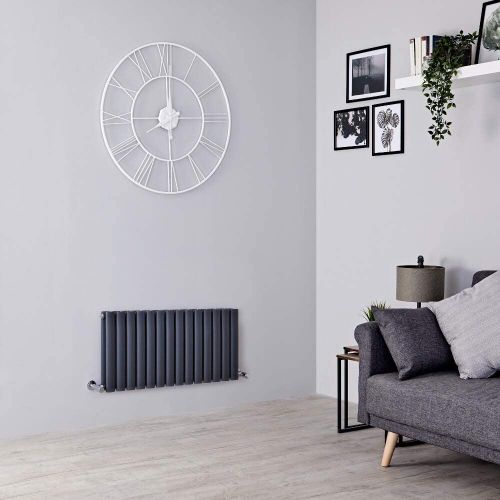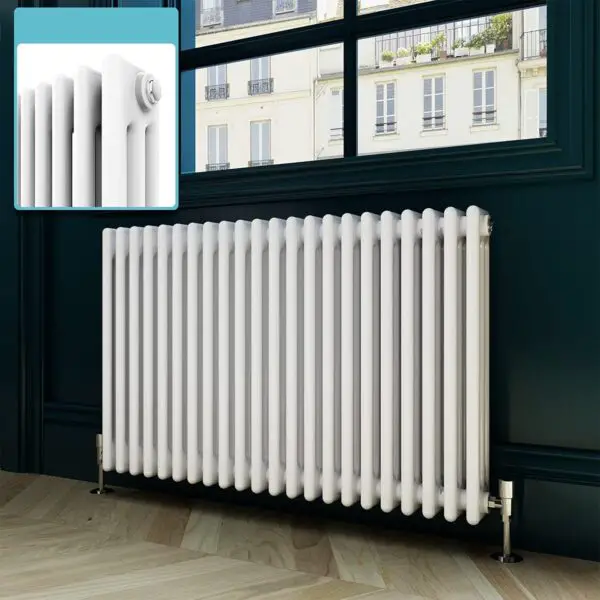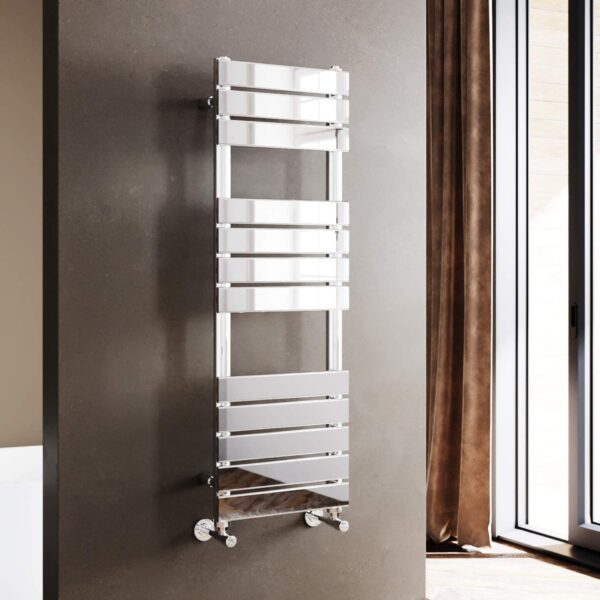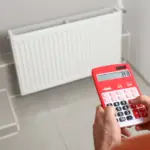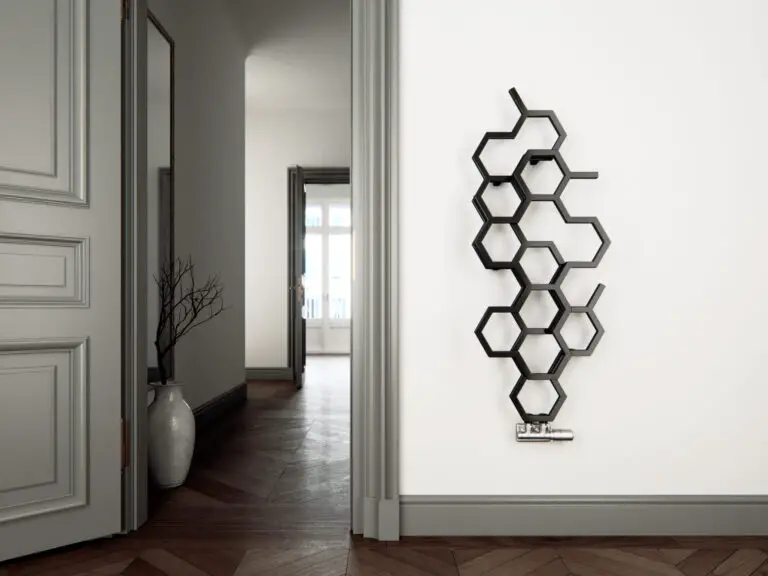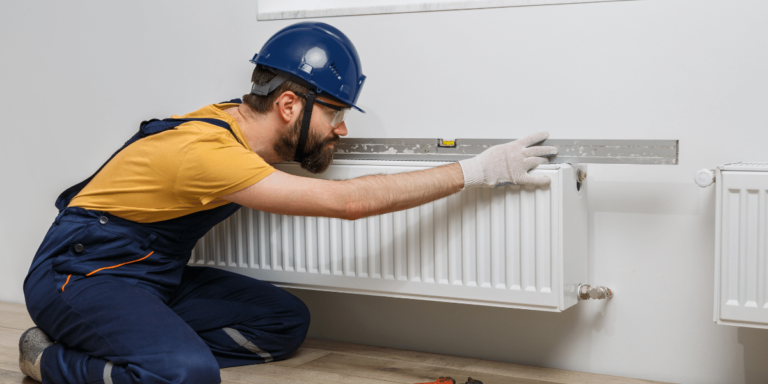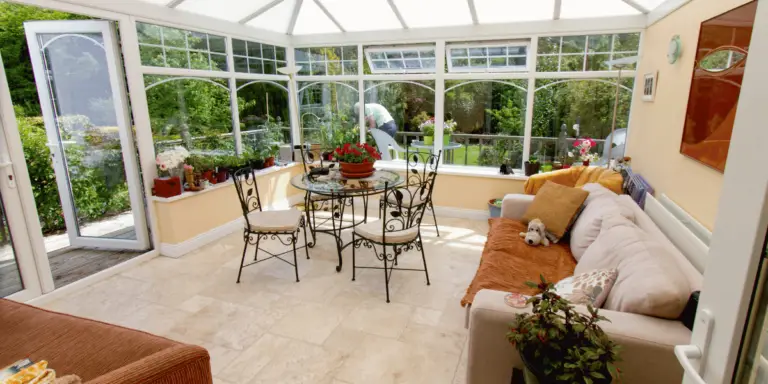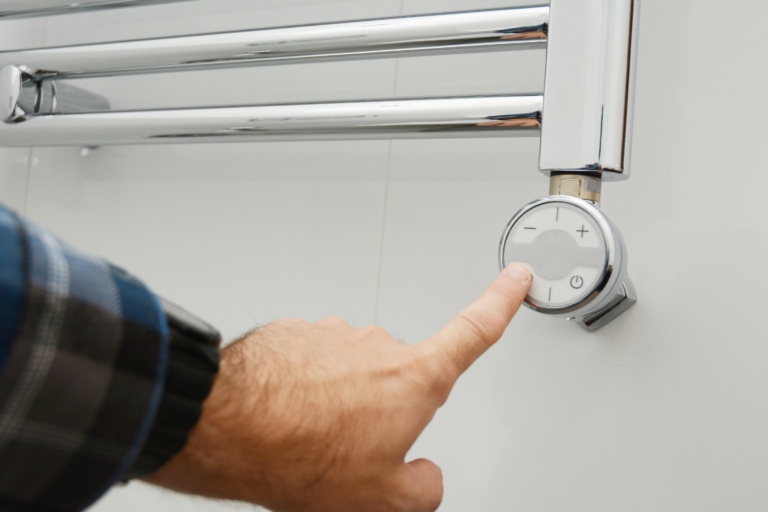When it comes to choosing the perfect radiator, there are lots of types, functionalities, brands and specifications to consider. So if it’s your first time purchasing, installing or fixing a radiator it can soon become overwhelming – leaving you frustrated and confused.
That’s why we’ve organised everything into neat sections for you so you’ll never again be left wondering where to find the most relevant, detailed explanations for your radiator questions… Heat Adviser is here to help! Feel free to bookmark this page for future reference.
So, without further ado, let’s get stuck in…
The Best Radiator Types
When it comes to deciding on the right radiator for your home, there are a few different types to consider. Depending on the size and shape of the room you are heating, you may opt for a panel radiator, a column radiator, a towel radiator or a convector radiator. Panel radiators are a great choice for smaller rooms as they offer a more compact design and are available in a variety of sizes.
Column radiators are more suited to larger areas, as they are wider and allow more air to be heated. Towel radiators are ideal for bathrooms and kitchens, as they provide a great way to heat towels as well as providing additional heat. Horizontal radiators are an efficient choice for larger areas, as they have a larger surface area and are designed to transfer heat quickly.
Our Ultimate Radiator Buying Guide for 2023
First Things First: Consider the size of the room
One of the first things you’ll need to consider is the size of the room because it will dictate the amount of space you have available for the radiator. Plus, the larger the room is the more heat you’ll require in order to keep it sufficiently warm throughout the year so it’s something worth considering. Typically, larger rooms are better suited for 2-3 large radiators, whereas a small room may only require 1 or 2 small radiators.
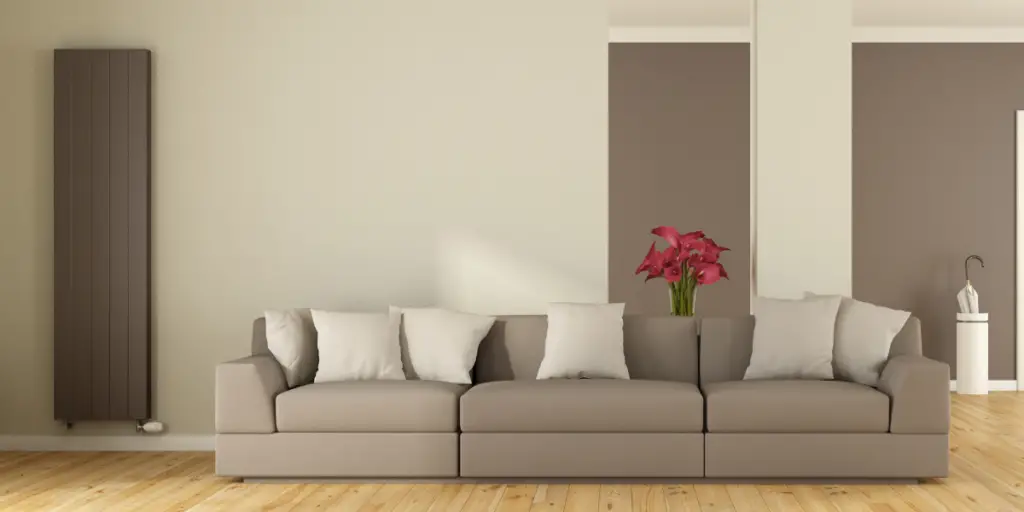
How much heat do I need for my room?
A BTU (or British Thermal Unit) is a universally-accepted measurement of heat output which is used to determine hot much heat a radiator releases into the room. The higher the BTU, the hotter the radiator! One of the first steps to choosing your perfect radiator is making sure that you know the total amount of BTU’s for the room that you’re fitting the radiators into.
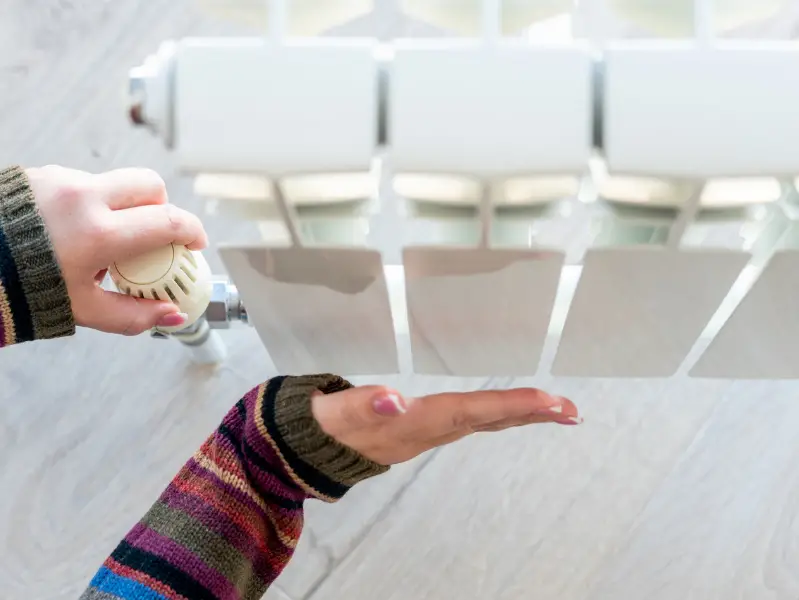
Not sure how to calculate the amount of BTU’s your room requires…?
You’re in luck! We’ve already done the complicated calculations for you by creating a BTU calculator which does all of the hard work for you in just a few clicks.
How many radiators do I need and what size should they be?
Once you’ve calculated the total BTU output required for your room, we can simply divide this number by the amount of radiators that you’re looking to install in the room to give us the average BTU required per radiator. This amount that you install is usually based on the wall space you have available, your budget or even the amount and location of pipework installed underneath the floorboards.
Consider the radiator positioning in a room
Depending on the room type, the room size and the number of windows and wall features you may need to consider where the best place to put your radiator is in a room.
Typically, radiators work best under windows or centrally to allow efficient convection current to distribute the heat evenly throughout the room. However, you may also like to think about where the pipes will come from as this can limit your options.
Do your radiators need replacing?
Depending on the warranty, lifespan, material and usage of your radiators you may or may not need to replace them. The best way to know if you need to replace your radiators is to consider things like the efficiency, discolouration, rustiness and surface scratches/leaking etc. Read our full guide on when do my radiators need replacing for more comprehensive information on this.
Which room the radiator will the radiator be installed into?
Depending on the room that you are looking to heat, there are often different radiator types associated with different rooms. For example:
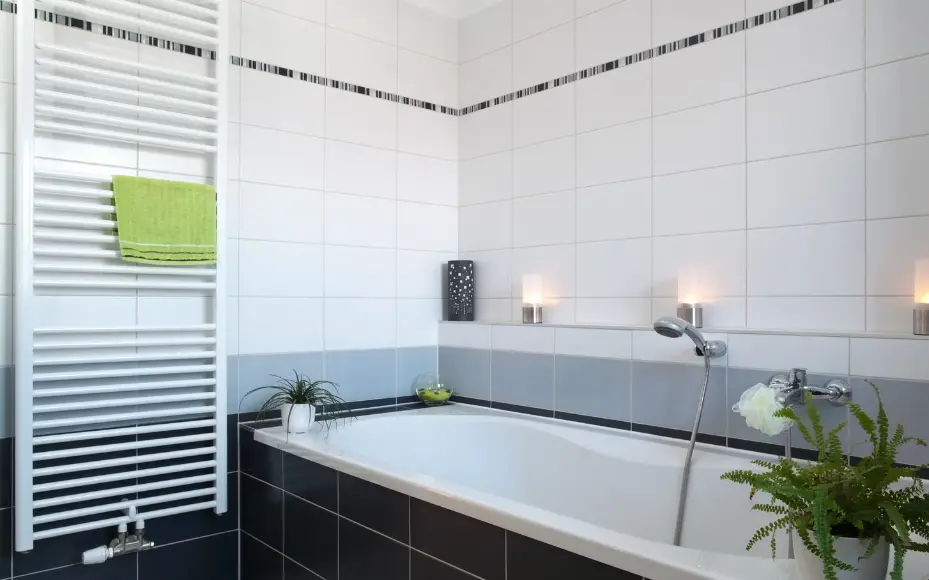
The best bathroom radiators tend to be a heated towel radiator as you can easily place towels on the multiple bars to keep them toasty warm – ready to keep you cosy when you’re stepping out of the shower. A dual fuel setup is particularly popular in bathrooms too. Not sure what dual fuel is? Don’t worry, we cover it in our next section titled ‘fuel type’.
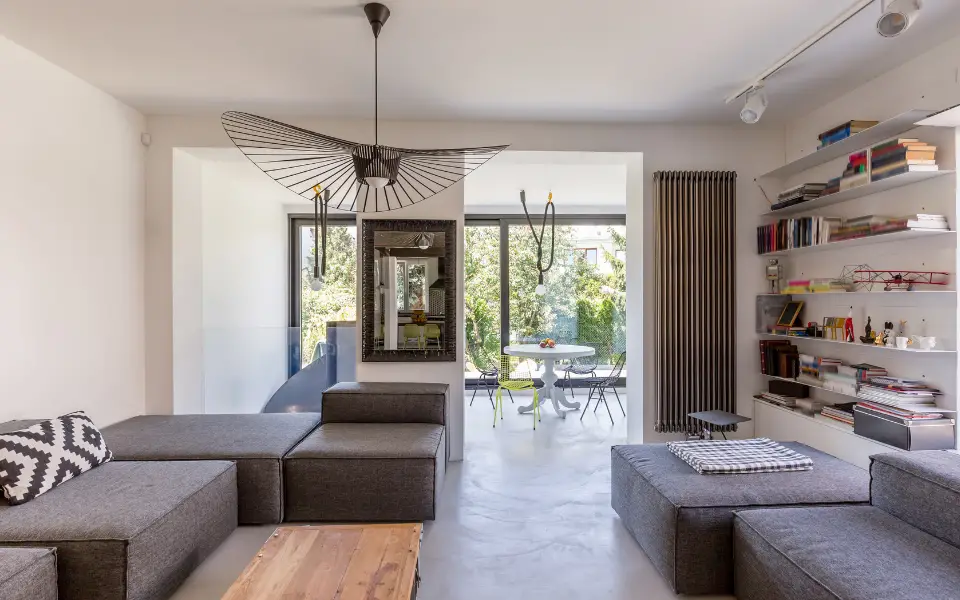
Living rooms usually require a large horizontal or vertical radiator with a large heat output. You might consider a statement piece to draw attention to an area of the room or you might prefer a plain white convector radiator underneath the window – tucked neatly away and out of sight.
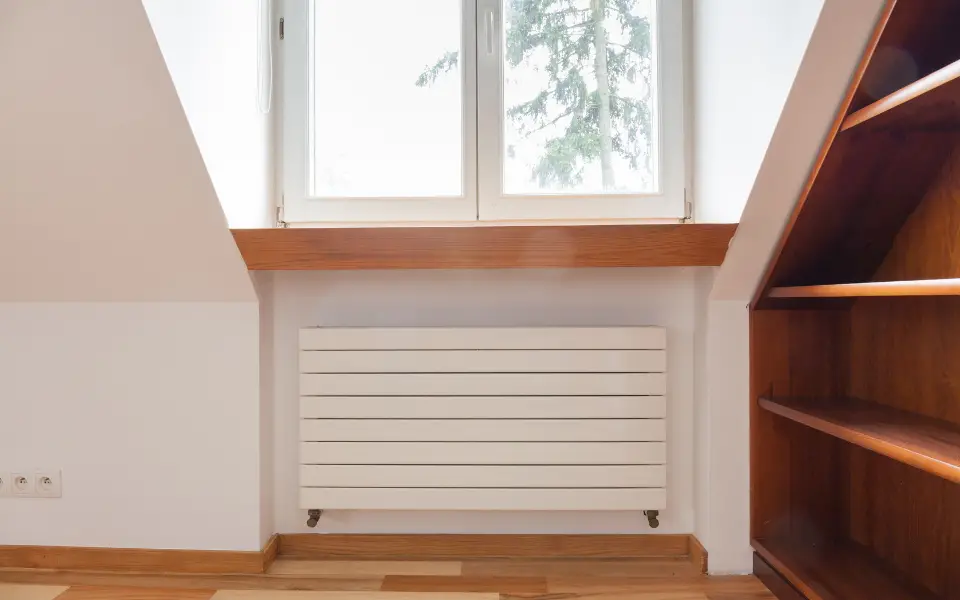
Bedrooms are best suited with a smaller radiator which doesn’t take up too much wall space. A short horizontal radiator is ideal if you want something discreet but still powerful enough to provide warmth.
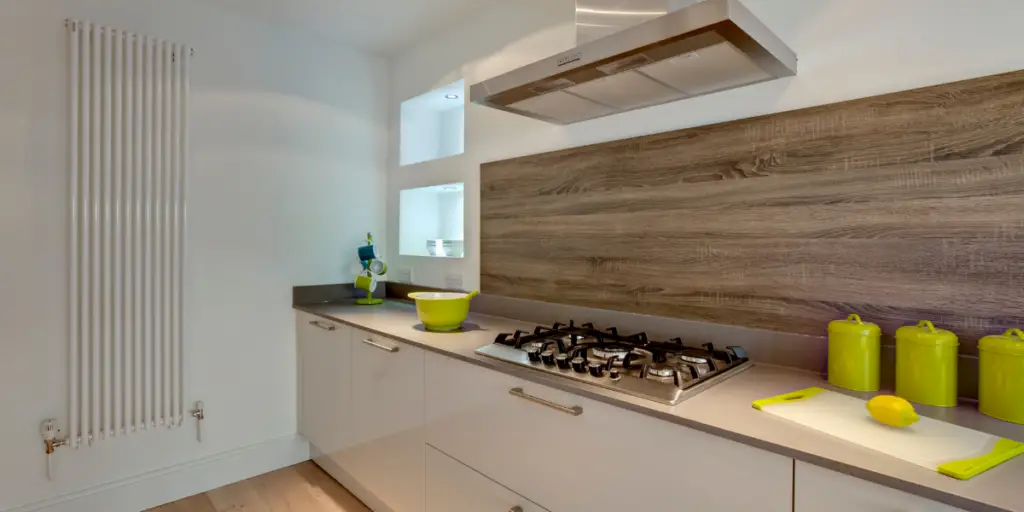
The best Kitchen radiators are typically tall and thin as these are generally placed conveniently in tight spaces between your kitchen cabinets and appliances. Plus, their additional height means that they provide a fantastic heat output.

The home office needs to be a comfortable temperature for working in all day without looking bulky and cumbersome in the background of your Zoom meetings! For this, we’d recommend a typical white panel radiator or even one of our best compact oil-filled radiators to keep near your feet for those extra-chilly winter mornings.
Conservatory heating your can be a little tricky due to the building regulations required for extending your central heating system and the lack of wall space for installing radiators. For more information you can read our blog on how to heat a conservatory.
What are the different types of radiator?
Fuel Type
There are now a vast array of options available on the market to suit any home. From traditional cast iron radiators to modern steel models, there are plenty of radiator types out there to help you find the suit the needs of you and your home.
You’ll need to first think about the fuel type that you’d like to go for, there are three options:
- Electric radiators
- Hydronic (Central heating radiator / convector radiator)
- Dual fuel (Combination of Electric and Hydronic)
Typically, hydronic radiators are the most economical and energy efficient in comparison to electric radiators. Although, electric radiators are still very popular as they offer a great deal of flexibility with their design and installation.
If you’re planning on installing an electric radiator, then you’ll need to decide whether you want one that is plumbed directly or if you would prefer to use a dual fuel setup.
What is A Dual Fuel Radiator?
Dual fuel radiators combine both electricity and water together in order to provide an efficient, versatile heating solution. You’ll need a T-piece and standard radiator valves which supply the water to the radiator, while the electric heating element and electrical supply allow you to set schedules on a thermostatic remote control.
Do I need a duel fuel setup?
Typically, dual fuel is only really used in bathrooms or downstairs toilets where you need to quickly dry towels without turning the full heating system on.
Orientation
It’s important to note that there are two main orientations for radiators, these are:
- Vertical radiators
- Horizontal radiators
Vertical vs Horizontal – which is right for me?
This largely depends on the room you’re looking to heat – the best vertical radiators are tall, slender and a great option for kitchens with limited wall space due to kitchen cabinets and appliances.
They create a visual elongation of the room which can give the illusion of higher ceilings. Whereas, the best horizontal radiators tend to work well underneath windows in living rooms or bedrooms. At the end of the day, it really comes down to personal preference as to which orientation you prefer.
For more information you might like to check out our guide on vertical vs horizontal radiators – there are pros and cons to each but ultimately it comes down to which features are more important for you and your home.
Wall mounted vs floor mounted – which is right for me?
In most cases, a radiator will be wall mounted because, as you’d expect, it takes up less space than a floor-standing radiator. This will often depend on the location of your pipework and the type of radiator you’re installing.
For example, many cast iron radiators are so heavy that they can’t be fixed to the wall so they come with feet which allow them to be free standing. Whereas heated towel rails are always wall-mounted to allow easy access at eye level to hang and dry towels.
Materials:
Different radiator materials offer different features and benefits such as higher heat output of corrosion resistance. Here are the best radiator materials used in 2023:
- Mild Steel
- Stainless Steel
- Cast iron
- Aluminium
- Mirror (glass)
Which material should I choose?
This really depends on the features you’re looking for in a radiator. Here are some of the benefits for each material:
Mild steel is the most common material so you really can’t go wrong with a steel unit. They tend to be the most affordable option, too. Although that doesn’t mean they’re not built to last – in fact, many modern steel radiators come with a guarantee of 10+ years!
Stainless steel is the next step up in terms of quality – the process of making the stainless finish really makes them an excellent choice their anti-corrosion helps to prevent rusting. Therefore, these radiators often come with a guarantee of over 15 years.
Cast iron is a fantastic choice for vintage or period properties, they’re seriously powerful radiators which are heavy and substantial, with an impressive heat distribution and output that’ll keep the largest of rooms toasty warm. They’re also fantastic at heat retention so they’ll stay at an ambient temperature for long after you’ve turned the heating off.
Aluminium is the new hot topic in home heating – it’s lightweight, energy efficient and heats up between 3-4 times faster than standard steel radiators! Plus, they’re fully recyclable at the end of their lifecycle which means you can rest assured that they’re an eco-friendly option.
Mirror radiators are excellent if you have limited wall space and would like to combine the benefits of a tall radiator with the functionality of a mirror.
Style
One of the most exciting parts about choosing a radiator… deciding on a style that you’ll love! There’s such a large range of designs to choose from:
- Traditional radiators are classic, timeless and elegant. The traditional design has been around since Victorian times and there’s no better way to add warmth and character to any room.
- The Best Column radiators are thick, chunky units which come in multiple sections and typically come in either a single, double or triple thickness variation.
- Modern radiators are sleek, contemporary and stylish. These radiators are usually made of aluminium but can also be crafted out of other metals like brass and copper. They’re incredibly versatile and can fit into almost any décor.
- Contemporary radiators are a great alternative to traditional radiators. They feature clean lines and simple shapes which make them perfect for minimalist interiors.
- Floor standing radiators are the ultimate statement piece. They look amazing when installed in a living area, dining room or kitchen.
- Designer radiators are an excellent choice if you want something unique and different. They’re available in all sorts of sizes, styles and finishes to suit any home.
- Flat Panel radiators are becoming increasingly popular and offer a number of advantages over traditional radiators. Flat panel radiators are much more compact and therefore take up less floor space. They’re also very easy to install and come in at an affordable price tag.
- Single radiators are simply one layer in thickness.
- Double radiators have two layers packed together in parallel.
- Triple radiators are the largest thickness configuration, with three layers packed together in parallel. These provide great heat output as a result of this but protrude out into the room more.
- Energy Efficient radiators are obviously a great option for anyone wanting to be more eco friendly or save money on their energy bills. These are typically made from aluminium.
- Space saving radiators are an excellent way to maximise your home’s square footage. These are typically designed to sit flush against the walls and are most commonly used in bathrooms or cloakrooms.
- Heated towel rails are the obvious choice if you’re installing into your bathroom or downstairs toilet. They could be fit into any room but they might look a little out of place in your living room or kitchen!
- Type 11 convector radiators are the most common radiator type in UK homes, they have a single panel and a single set of internal fins (each denoted by the number 1 in the name ‘type 11’)
- Type 21 convector radiators have double panels with only one set of fins.
- Type 22 convector radiators have double panels and two sets of fins. Therefore, they produce the greatest heat output of the three.
Brand
There are multiple brands available on the market nowadays, each with their own pros and cons. For example, if you’re looking for an ultra-modern quirky design with high quality fixings and long lifespan then you can’t go far wrong with a Terma radiator.
However, if it’s something more contemporary that you’re looking for then NRG is one of the most popular brands around.
Overall, the radiator brand you select is somewhat of a lesser consideration in the radiator purchasing process. You want to make sure that they’ve got good reviews and a long guarantee of course but most well-known brands are thoroughly tried and tested, so you shouldn’t need to worry too much!
We have written an article about our best radiator brands though so this might be worth checking out if it’s something you’d like to take into consideration with your radiator purchase.
Colour
Then you’ve also got to consider the colour that you’d like to go for. White is the most common colour, although copper and anthracite radiators are becoming even more popular in recent years. At Heat Adviser, we believe that your radiator should be more than a functional heating accessory – it should make a statement that draws you in and holds your attention.
As ever more stylish designs come into the market, boring white convection radiators are quickly becoming a thing of the past. They blend into their surroundings whereas designer radiators are beautifully crafted pieces that can transform even the dullest of rooms into a stylish, contemporary space.
Choosing the right valves for your radiator
Often an afterthought, radiator valves are an important piece of the puzzle that shouldn’t be forgotten as it can make or break the overall look and feel that you’re going for. There are a few different types and variations and the one you’ll need will depend on the orientation and location of the pipes that are coming out of the wall or floor and into the heater.
If you’re looking for more information on how to replace your radiator valves be sure to check out our how-to guide on this!
Manual Valves
Manual valves are used when there’s no thermostatic control fitted to the radiator itself. These valves allow you to regulate the flow of water through the radiator via a handle. You may find yourself using this type of valve if you’re looking for the cheaper option with less functionality.
Thermostatic Valves
Thermostatic valves allows you to set the desired temperature and then the valve will automatically adjust the flow of water to maintain that temperature by itself. The advantage of these valves is that they provide greater accuracy and flexibility over manual valves with less manual adjustments.
Straight Valves
Straight valves are used when the flow of water through the copper pipes goes directly into the radiator inlets in a straight line (as the name suggests). An example of this might be when you’ve got a towel radiator close to the floor and the pipes come straight up from the flow into the heated towel rail.
Angled Valves
Angled valves are used when there is a 90 degree angle between the copper pipes and the radiator inlet. An example of this might be when the pipes come from the wall and then up into a towel radiator at a 90 degree angle.
Corner Valves
Corner valves are less common, although they can still be useful in certain cases. Much like the angled valve, they are used when the water flow changes at a 90 degree angle between the pipes and the inlets. However, in this instance the thermostatic control itself is at an angle – meaning that it doesn’t stick out into the room but instead lies neatly tucked away, parallel to the wall.
Additional accessories to consider
These radiator accessories are also useful for adding additional styling, functionality, efficiency or to help with the maintenance of the radiator:
- Towel rail elements
- Radiator reflector panels
- Radiator fan boosters
- Radiator covers
- Bleed valve key
- Extended radiator paintbrush
- Extended duster
- Radiator paint
- Radiator hangers or hooks
What are the costs associated with buying a radiator?
The cost of installing a radiator can vary greatly depending on the style, size, colour and type you go for. Generally speaking, you’ll pay between £50-£100 for a basic radiator and anywhere up to £800 for a large, bespoke radiator in cast iron or stainless steel.
You’ll also need to consider the installation cost of a qualified heating engineer or plumber.

